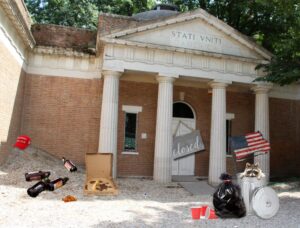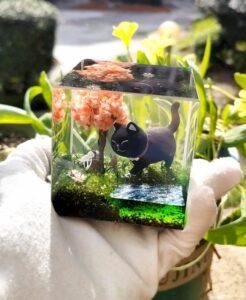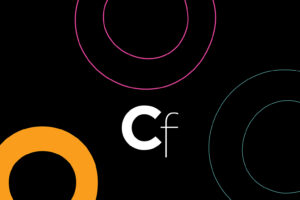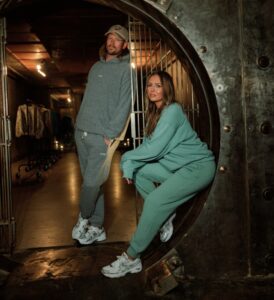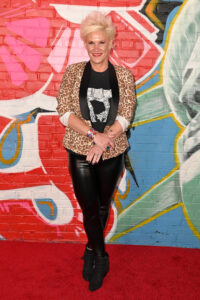Pussy Riot’s Nadya Tolokonnikova on Reclaiming Her Prison Time Through Art
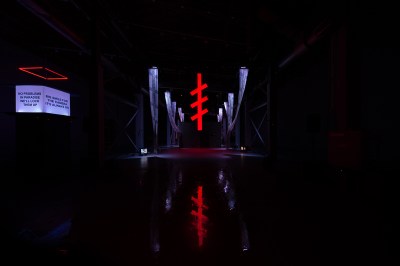
Editor’s Note: This story is part of Newsmakers, a new ARTnews series where we interview the movers and shakers who are making change in the art world.
More than a decade after Pussy Riot cofounder Nadya Tolokonnikova was imprisoned in Russia for two years after performing a “punk prayer” inside of Moscow’s Cathedral of Christ the Savior, the artist is putting herself back into a prison of her own making.
For her installation Police State (2025) at the Museum of Contemporary Art in Los Angeles (LA MOCA), Tolonkonnikova has recreated a Russian jail cell. This time, however, she reimagines the cell as a space for art. The work is a form of reclamation not only for Tolonkonnikova but also for all the Russian, Belarusian, and American prisoners whose work is also included in the installation. The effort to include them is part of a larger ongoing project between Tolokonnikova’s organization Art Action Foundation and the Artistic Freedom Initiative, which work together to archive and exhibit prisoners’ art.
Within the piece, visitors are thrust into an eerie authoritarian state. Inside a prison cell, one can observe Tolokonnikova making music or art, or even resting throughout the day, via security camera footage and peepholes. Initially, these sights were meant to be seen only between June 5 and 14, but the show was extended due to the museum’s closure amid anti-ICE protests and the deployment of the National Guard.
ARTnews spoke with Tolonkonnikova to hear about staging this installation during ongoing political conflict in the US and abroad.
This interview has been edited and condensed for clarity and concision.
ARTnews: How did you first conceive of Police State?
Nadya Tolokonnikova: I think the starting point was this idea I had about five years ago of reclaiming my prison experience as an art piece. I began thinking about my prison time from 2012 to the end of 2013 as one of the longest durational performance pieces in art history. That was my way to reclaim the time my government stole from me. I wanted to make them my bitches—not the other way around. The day after the United States elections, the [associate] curator of performance and programs at the Geffen, Alex Sloane, wrote me.

Nadya Tolokonnikova: Police State, 2025, performance, at the Geffen Contemporary at MOCA.
Photo Zak Kelley. Courtesy LA MOCA.
Walk me through what you’re doing as you perform in Police State.
Each day starts at 11 a.m. and runs through the end of the workday, which is sometimes at 5 p.m. or 6 p.m., and once, on a long Friday, went until 8 p.m.
I enter the cell a bit earlier to get ready, and I put all the stuff in its place. Sometimes I’m changing the artworks that I have on the walls because I’m showing a lot of artworks by current and former political prisoners. Then, I put on my uniform and headscarf, as all Russian female prisoners have to wear them in prison—it’s a super patriarchal norm and the law in Russia—and, if you refuse, then you’re not eligible for parole.
Once the day starts, I rotate between two tables. I stuffed them with everything I wanted to have in jail but couldn’t. I’m fulfilling my dreams around this idea of: what if prison could be place of creation? I’ve been thinking a lot about rehabilitation versus punishment, and how we can move toward the former. How can we help rehabilitate people through art? I’ve been in touch with a lot of people in different countries who run these programs.
One table is for audio production, where I mix and essentially produce music on the go. It’s a combination of different layers. The base layer is this deep subbase that penetrates your body. I wanted to create this very visceral feeling, before layering different sounds on top of it. Then, I took actual prison sounds from several jails in Russia. There are human rights groups who make videos of this torturing available on YouTube. I downloaded them, and I show the video footage on the TV in the installation and overtop I’m playing this very ambient, yet disturbing soundtrack. There is another layer that is more nostalgic to me, with old Russian lullabies my mother used to sing to me. Sometimes I play the old recordings or I sing them in a microphone that I have. Other times I play them on this little pink piano that’s on the table.
On the second table is a very old 1921 Singer sewing machine that I found on the street and made it work. When I was in the Russian prison camp, I was sewing military and police uniforms. So, I wanted to recreate that part of the experience of being in jail as well, but with my own twist. I attached some things, like lace and teddy bears, to the police uniforms to make them less menacing and to almost neutralize them, along with slogans and words that have meaning to me, like “alien”, “revoked”, “ghosts”, “deleted”—basically all the feelings I’ve had as a person who was forced to leave her home and try to find it elsewhere.

Artworks by political prisoners in Nadya Tolokonnikova’s 2025 performance installation Police State, at the Geffen Contemporary at MOCA.
Photo Yulia Shur. Courtesy LA MOCA.
What does it mean to show this work in the United States right now?
It’s surreal. When the protests first broke out, it was only my third day of Police State and the museum closed. I decided to stay until the end of the workday because that’s what I agreed to, but my husband, John Caldwell, went to the protest and live streamed the sounds of protests. Now, instead of the original Russian prison sounds, I layered the sounds of the protests to create new soundscapes. The recording is chilling. There was one activist talking about this country turning into Russia. But we recognize having military on the streets. I have years of fighting with the National Guard in Russia under my belt. When I finally left the museum that day, there were lines and lines of police tear gassing and shooting peaceful protestors with rubber bullets. The bullets were flying so close to me and, since they don’t do that in Russia, I had never experienced that before.
I felt like those two days, when the biggest protests were happening, were like the scene from a 2001: A Space Odyssey where the character flies through multi-dimensional worlds. I felt like time and space were twisted in this ugly geopolitical authoritarian dance, where I’m experiencing once again what I did before. America started to remind me of Russia in 2011 and 2012, when we had this huge protest against Putin. We believed that we could save the country, and then we were not able to do that. From there, it all went downward. I just really hope that people here in the US have the capacity and persistence to defend this democracy. And the entire Pussy Riot movement is ready to help as much as we can.
What do you hope people will get out of Police State?
I want them to come experience it. It sucks that we can’t run it everywhere, all at once. We’re kind of tied to this big metropolitan city that understands everything anyway, but I want people to make their own conclusions—that’s the number one point. I don’t want to put any ideas in their head. There is room for interpretation.
How does it feel to put yourself in a kind of police state on your own terms?
The entire installation has this uplifting, almost church-like quality. I play a lot of religious music, mostly Gregorian chants, that are kind of sad on the one hand but also feel like they almost bring you to heaven. And so, through this horror and sounds of the police state, we have this beautiful, angelic choir to help us transcend this moment.
I want to encourage people to speak up and use any instruments they have—whether it’s art or something else. This moment reminds me of Russia in 2011 and 2012, when it felt like there was a potential for us to actually become democratic. I’m not an historian and I didn’t know what went wrong, but I feel like Americans still have a lot of room to express themselves and to exercise their rights. It’s not as bad as it could be and as it might be at some point.
There’s work by current political prisoners on the wall of the installation that I would like people to witness. If those people have courage to make their political artworks from the literal Gulag, where they could be murdered, like Alexei Navalny, and they can overcome such terrifying circumstances through the act of creation to show this, then each of us can too.

Nadya Tolokonnikova: Police State, 2025, performance, at the Geffen Contemporary at MOCA.
Photo Zak Kelley. Courtesy LA MOCA.
Tell me about this collaboration with prisoners.
There are two works. One is in collaboration with anonymous prisoners in the United States and Belarus. I sourced fabric produced by these prisoners and used that instead of canvas in the installation, on top of which I put my own calligraphy. One of the works says, “The last one here. I’m going to be the first one in heaven.” I guess this is the mood that I’m experiencing lately a lot—it’s sad, but also weirdly uplifting. Another features the signature Pussy Riot balaclava and I write in Russian the phrase, “They will not go through,” which was the slogan by antifascists against General Francisco Franco during the Spanish Civil War in the 20th century. The interesting part about acknowledging the pain that one has to go through in order to fight the system of oppression is also the beauty and the hope of it. Ultimately, the community is the place where I get most of my strength.
As I mentioned earlier, I also feature artworks by prisoners on the walls of the installation. Some that stood out to me include the portrait of a woman in jail by artist Asya Dudyaeva, who is serving three and a half years in Russia for distributing postcards against the war in Ukraine; an anarcho-kitten by poet Artem Kamardin, who is in jail for seven years for reading poetry on the streets of Moscow; and a bleeding banana work by Anya Bazhutova, who is serving five and a half years for speaking out about Russia’s crimes in Bucha, Ukraine. This little exposition of political prisoners’ work is part of a larger, joint project with my organization Art Action Foundation and the Artistic Freedom Initiative that I’m super passionate about. Our mission is to prevent artwork by artists from vulnerable groups from being erased by archiving and exhibiting the work.
